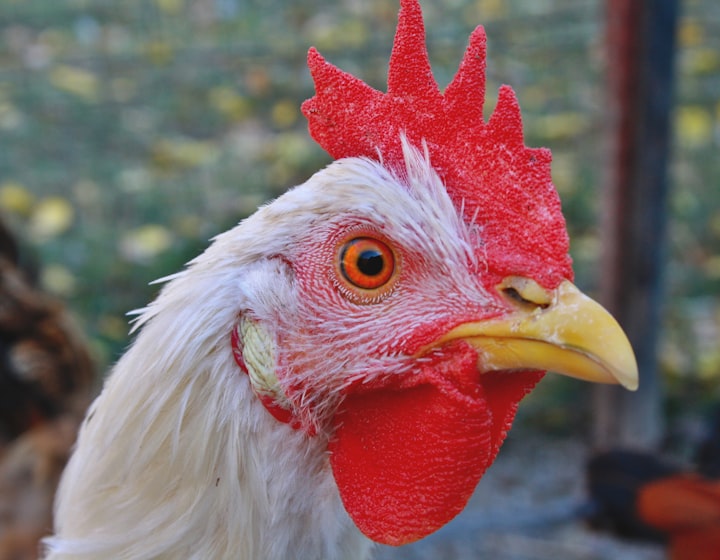Diseases and diseases management in broiler farming:A comprehensive guide
Proper management of diseases in broiler production

Title: Diseases and Disease Management in Broiler Farming: A Comprehensive Guide
Introduction:
Broiler farming, a profitable venture in the poultry industry, is not immune to diseases that can significantly impact flock health and productivity. Disease outbreaks can result in economic losses and pose challenges to animal welfare. This comprehensive article aims to provide an in-depth understanding of common diseases in broiler farming and effective disease management strategies to ensure a healthy and thriving flock.
1. Infectious Bursal Disease (Gumboro Disease):
Infectious Bursal Disease (IBD) is a highly contagious viral disease that primarily affects the immune system of broilers. It can lead to immunosuppression, increased susceptibility to secondary infections, and high mortality rates. Vaccination, strict biosecurity measures, and proper farm hygiene are vital in preventing and controlling IBD.
2. Coccidiosis:
Coccidiosis is a parasitic disease caused by protozoa of the genus Eimeria. It affects the intestinal tract of broilers, resulting in reduced growth, poor feed conversion, and increased mortality. Strict sanitation practices, regular use of coccidiostats in feed, and proper management of litter and water sources are essential to control coccidiosis.
3. Necrotic Enteritis:
Necrotic Enteritis is a bacterial disease caused by Clostridium perfringens. It often occurs in broilers raised in intensive production systems. It can cause severe damage to the intestinal lining, resulting in poor growth, increased mortality, and increased susceptibility to other diseases. Implementing good hygiene practices, maintaining optimal litter conditions, and using antibiotic alternatives or medications can aid in managing Necrotic Enteritis.
4. Respiratory Diseases:
Broilers are susceptible to various respiratory diseases such as Infectious Bronchitis, Avian Influenza, and Mycoplasma gallisepticum. These diseases can cause respiratory distress, reduced growth, poor feed conversion, and high mortality. Vaccination, proper ventilation systems, minimizing stress factors, and maintaining strict biosecurity protocols are key in preventing and managing respiratory diseases.
5. Marek's Disease:
Marek's Disease is a viral disease that affects young broilers. It causes tumors, paralysis, and immunosuppression, making birds more susceptible to secondary infections. Vaccination and strict biosecurity measures, including isolation of susceptible birds, are crucial in preventing and controlling Marek's Disease.
6. Salmonellosis:
Salmonellosis is a bacterial infection caused by various strains of Salmonella. It can result in diarrhea, reduced growth, poor feed conversion, and contamination of poultry products. Strict biosecurity measures, good hygiene practices, proper waste management, and regular testing are essential for preventing and controlling salmonellosis in broiler flocks.
Conclusion:
Disease management is vital for the success of broiler farming operations. By implementing effective biosecurity measures, vaccination protocols, regular monitoring, and maintaining optimal farm hygiene, farmers can significantly reduce the risk of disease outbreaks and safeguard the health and productivity of their broiler flocks. Staying updated on the latest research and guidance from veterinary experts and regulatory bodies is essential in implementing the most appropriate disease prevention and control strategies. By doing so, broiler farmers can protect their investment, ensure profitability, and contribute to the overall sustainability of the broiler farming industry.
When a disease outbreak occurs in a broiler farming operation, it is crucial to implement immediate control measures to minimize the spread of the disease and mitigate its impact on the flock. Here are some key steps for immediate disease control in broiler farming:
1. Quarantine: Isolate and separate the affected birds from the rest of the flock. This helps prevent the spread of the disease to healthy birds. Ensure that the quarantine area has separate equipment, feed, and water sources to avoid cross-contamination.
2. Contact a Veterinarian: Seek professional advice from a veterinarian experienced in poultry health. They can help identify the disease, provide specific treatment recommendations, and guide you through the control measures based on the particular disease and its severity.
3. Biosecurity Measures: Strengthen biosecurity protocols to minimize the introduction and spread of the disease. This includes restricting access to the farm, disinfecting equipment, vehicles, and footwear, implementing strict hygiene practices, and practicing proper waste management.
4. Vaccination: Determine if vaccination is an option for the specific disease outbreak. Vaccination can help prevent the disease from spreading further and reduce its impact on the remaining birds. Consult with a veterinarian to develop a suitable vaccination strategy.
5. Sanitation and Cleaning: Implement thorough cleaning and disinfection procedures in the affected areas. Remove and properly dispose of litter, bedding, and any other materials that may harbor the disease-causing pathogens. Clean and disinfect all equipment, surfaces, and housing structures following recommended protocols.
6. Medication and Treatment: Administer appropriate medication or treatment as recommended by the veterinarian. This may involve the use of antibiotics, antivirals, or other medications to control the disease and alleviate symptoms in affected birds. Follow dosage instructions carefully and adhere to withdrawal periods, if applicable.
7. Monitoring and Surveillance: Establish a system for ongoing monitoring and surveillance of the flock. This includes regularly observing bird behavior, monitoring feed and water consumption, and conducting regular health checks. Report any changes or abnormalities to the veterinarian promptly.
8. Record Keeping: Maintain accurate records of the disease outbreak, including dates, symptoms, treatments administered, and outcomes. This information is valuable for future reference and can help identify patterns or recurring issues.
9. Learn from the Outbreak: After the immediate control measures are in place, take the time to analyze and understand the outbreak. Identify potential sources of the disease introduction, evaluate the effectiveness of existing biosecurity measures, and consider implementing preventive measures to minimize the risk of future outbreaks.
Remember, swift and decisive action is critical when dealing with a disease outbreak in broiler farming. Working closely with a veterinarian and following their guidance is essential for effective disease control and minimizing losses within the flock.





Comments
There are no comments for this story
Be the first to respond and start the conversation.